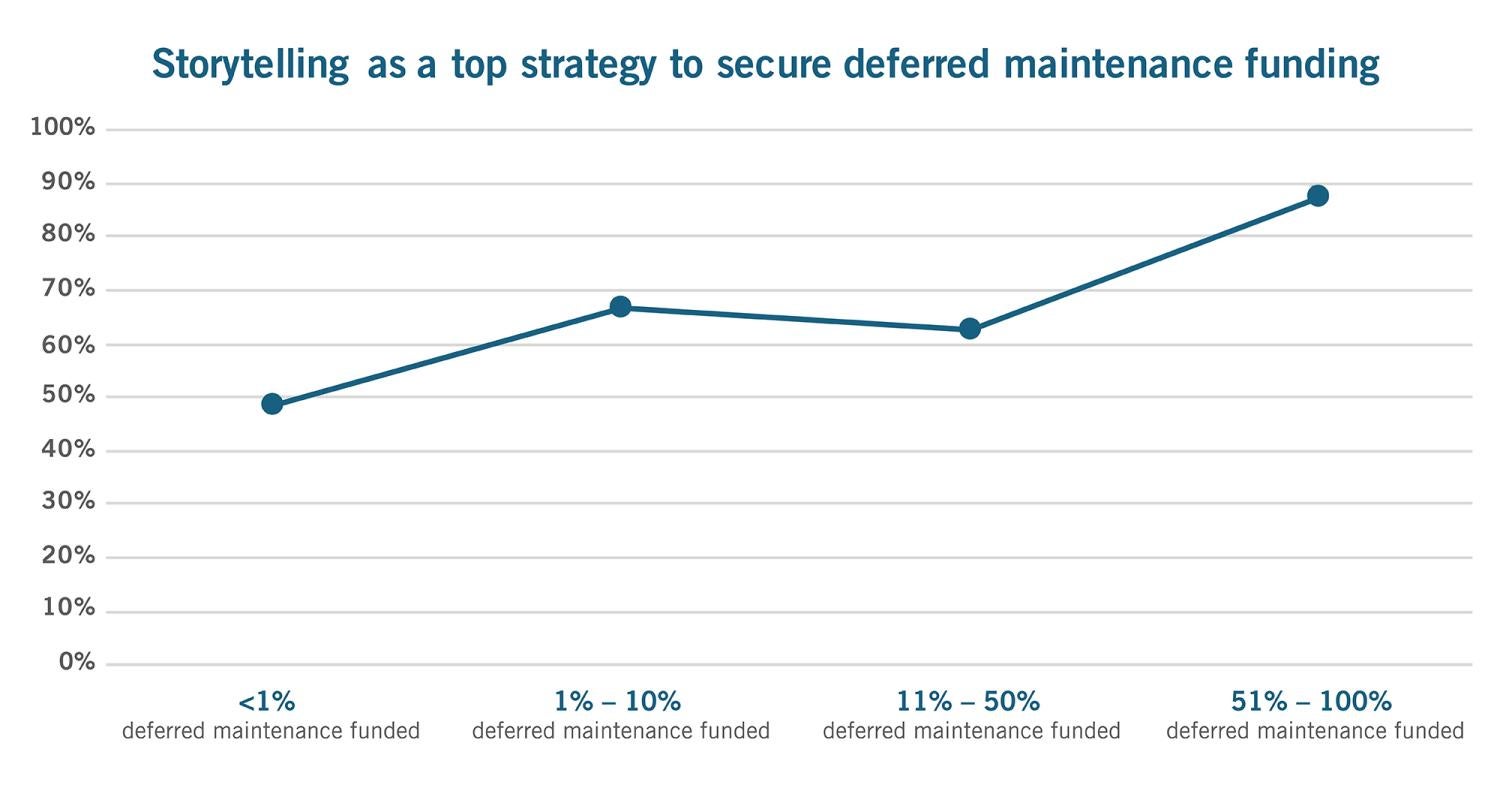The correlation between strategy and funding

This chart shows the percentage of respondents who used storytelling as a top strategy to gain executive buy-in for deferred maintenance funding and the level of funding approved in 2024.
Data from the 2024 ASHE Hospital Operations Survey
Every facilities manager knows that deferred maintenance will always live among us. According to a 2021 study conducted by capital planning firm Facility Health Inc. in Grand Rapids, Mich., about 41% of the nation’s infrastructure assets had exceeded their expected useful life at the time of the study’s release.
That figure included exterior and interior architecture as well as life safety; heating, ventilating and air-conditioning; mechanical; electrical; and plumbing systems. The study, which was commissioned by the American Society for Health Care Engineering (ASHE), estimated that the amount needed to address the deferred maintenance backlog at the time of the study was $243 billion.
Deferred maintenance is part of an ongoing to-do list in health care facilities. After one boiler is replaced, a chiller repair likely tails closely behind. The problem, however, is when the list of projects grows faster than a facility can keep up.
The 2024 Hospital Operations Survey, conducted by ASHE’s Health Facilities Management magazine, explored several issues, including funding for deferred maintenance projects.
When asked about the percentage of deferred maintenance requests that were approved in 2024, 33% of respondents who received funds reported receiving them for about 1% to 10% of their deferred maintenance projects, and nearly 36% were able to secure funds for 11% to 50% of projects. More than 7% of respondents were able to secure funds to tackle more than 50% of their deferred maintenance, and 10% of respondents said less than 1% of their requests were approved.
Respondents employed various strategies to secure those funds, such as tying upgrades to regulatory compliance (59%), bundling deferred maintenance with break-fix projects (40%) and conducting hospital plant tours (34%). The top strategy used, however, was gaining executive leadership buy-in by explaining how infrastructure impacts patient care.
Sixty-four percent of total respondents who received any amount of deferred maintenance funding said connecting the story between infrastructure and patient care was one of the most effective strategies used to attain those dollars. However, when separating the data, the percentage of respondents who report using this strategy tends to increase alongside the percentage of requests they were able to get approved.
For instance, of those who received funding for 1% to 10% of deferred maintenance, 67% used this as their top strategy, along with 63% of those who received funding for 11% to 50% of their deferred maintenance projects. The number of people using this strategy increases sharply among those who received funding for greater than 50% of deferred maintenance projects. Eighty-eight percent of this group said they used this storytelling technique as their top strategy. The only respondents who did not list this as a top strategy were those who received less than 1% of funding. For this group, tying upgrades to regulatory compliance was the most selected strategy (60%). Storytelling to explain the link between infrastructure and patient care was No. 2 at 49%, tied with the strategy of bundling deferred maintenance with break-fix projects.
Although the data does not confirm causation between deferred maintenance funding strategies and the ability to secure funds, it shows a correlation. Perhaps those with greater success simply have larger budgets or work with leadership who are well-versed on the impact of infrastructure on patient outcomes. But for those who have had little success in ticking away at their deferred to-do list, it’s an approach worth exploring.

